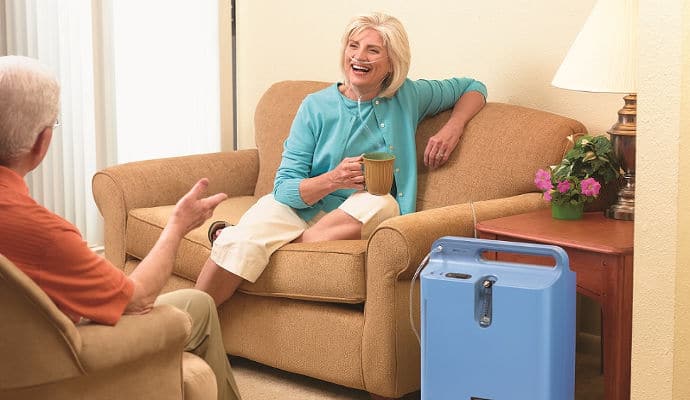
Seniors with limited mobility are at risk of developing painful bed sores (aka pressure sores). Sitting or lying in the same position for long periods of time can cause these potentially life-threatening sores to form on their body. Since bed sores prevention is far easier than healing them, Vive Health shares 3 tips for preventing sores from developing and also explain 2 common treatments.
If you are caring for an older adult who has limited mobility or is confined to a bed, recliner, or wheelchair, knowing your way around bed sores is a must. Why?
While seemingly harmless in the beginning, bed sores can quickly progress into life-threatening tissue decay and infection. It may sound dramatic, but whisper concerns about a bed sore to any medical professional and they’ll probably have a wound care specialist evaluating your older adult STAT.
Unfortunately, the people most susceptible to developing bed sores are the ones already experiencing debilitating illnesses which have cost them their mobility in the first place.
Get 3 tips for preventing bed sores from developing and find out about the 2 methods doctors typically use to treat bed sores.
3 tips for bed sores prevention
1. Frequent repositioning
The number one way to preventing and heal bed sores is to reposition your older adult’s body. Simply shifting the body every 2 to 3 hours makes a huge difference in relieving pressure on those bonier parts and boosting circulation.
Specialty mattresses or toppers with alternating airflow can do this job for you. For regular mattresses and chairs, manually repositioning them with pillows works too. Using gel or memory foam pillows or mattress toppers helps, but still doesn’t remove the need for constant repositioning.
2. Managing incontinence
Good incontinence hygiene can be the difference between healthy and broken skin.
During each incontinence brief change, clean, dry, and apply barrier ointments, creams, or gels to protect skin from getting wet and breaking down.
Keeping the sacral area (just above the tailbone) clean and dry helps keep contaminants away from sensitive areas and prevents bacteria growth in open sores.
3. Prioritizing nutrition and hydration
Adding tissue-building foods like fatty fish, citrus fruits, broccoli, cauliflower, quinoa, flax seeds, and nuts can give your older adult the nutrients their body needs to strengthen skin and repair tissue.
Staying properly hydrated also helps promote good blood circulation, which prevents tissue damage. You could also make eating easier with an overbed table that rolls right up to your older adult’s bed or chair.
2 primary bed sore treatments
Depending on the stage and size of the bed sore, your older adult’s doctor will recommend a treatment or may have them see a wound care specialist to formulate a customized plan to stop the sore from developing and reverse the skin breakdown. They should also make sure you’re fully trained on how to care for the wound.
When you’re helping to treat and heal a bed sore, vigilant monitoring is essential. These sores can progress rapidly from one stage to the next in a matter of days.
There are two main methods to treating bed sores.
1. Barrier ointments, creams, or gels
For stage I and healed bed sores, applying barrier creams prevents skin from breaking down.
Moisture from sweat, urine, or other contaminants can make skin more likely to tear or open. Barrier creams keep out these contaminants and reinforce the vulnerable skin.
2. Wound dressings
Stage II bedsores and up have existing skin breakdown require more serious wound dressings.
These vary from breathable gauze pads to treated silicone padding with adhesive barriers, foam, and/or hydrocolloid dressings. Additional materials including silver and calcium alginate help healing and may be applied with dressings.
A home health nurse or other medical professional will train you on how to treat the bed sore and change dressings. Training is critical because treating a bedsore without it can be dangerous.
For example, a stage II bedsore may need barrier cream and silicone dressing. But a stage III bedsore would require debridement, or the removal of necrotic tissue that could promote life-threatening bacterial growth.
Final considerations
Are bed sores scary? Absolutely. Are they too much for caregivers to manage? Not at all.
With prompt attention from a medical professional, as well as proactive actions like repositioning, staying hydrated, and maintaining a healthy weight, you can keep your older adult bedsore-free for good.
Recommended for you:
- Bed Sores 101: Causes, Stages, and Early Detection
- Special Cushions Prevent Pressure Sores
- Incontinence – Tips for Changing an Adult Diaper [Video]
Guest contributor: Jessica Hegg is the content manager at ViveHealth.com. Interested in all things related to living healthy lifestyle, she works to share valuable information aimed at overcoming obstacles and improving the quality of life for others.
Image: Care Focus Training
This article wasn’t sponsored and doesn’t contain affiliate links. For more information, see How We Make Money.
About the Author
Jessica Hegg is a manager at ViveHealth.com. Ms. Hegg was also a full-time caregiver for her Mom who had Primary Progressive MS and Epilepsy. She is a freelance writer with a passion for cooking and lives in Austin, TX with her Mom and her wonderful husband. You can find her personal blog about caregiving tips, ideas, and solutions at Givea.Care.












